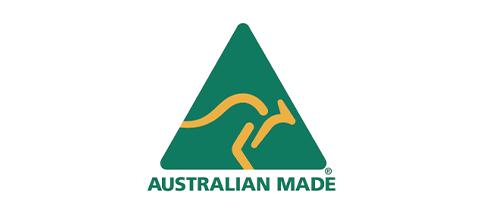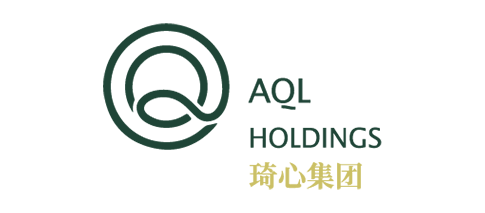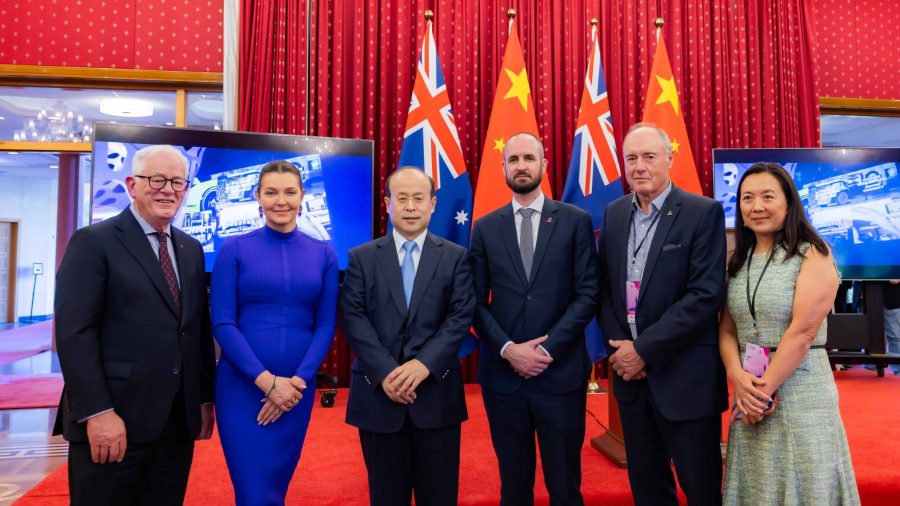This report not only showcases the achievements of trade between the two countries, it is also an excellent analysis of the growth of Australia’s agricultural exports to China over the period 2015-2022.
This report is the most robust open market guide available, presenting not only the year-on-year volume of each agricultural product traded in China, but also the year-on-year volume of each agricultural product traded in specific Chinese provinces.
Providing such a comprehensive trade record takes a great deal of the guesswork out of future trade endeavours by Australian agricultural marketers, whether they are looking to increase co-operation between established Australian brands and provinces, or to identify opportunities for products that have yet to enter the Chinese market.






Forty years of global efforts to remove tariffs and open up economies to trade and investment has delivered extraordinary growth, and dramatically increased living standards of literally billions of people across the world.
Open economies not only benefit the wealthier countries but lift the world’s poor out of seemingly intractable poverty. This has been evidenced most dramatically in China over recent decades, with the removal of over 800 million people from abject poverty following the opening up of China’s economy in 1979.
This report, which shines a very analytical eye on food trade between China and Australia since the signing of the China-Australian Free Trade Agreement (ChAFTA) in 2015, confirms once again the power of opening markets between countries; confirms the power of recognising that what China is good at, Australia needs, and what Australia is good at, China needs. It gives one important practical insight into how agriculture has contributed to the 142% increase in total trade between Australia and China since the signing of ChAFTA in 2015.
However, this Report does much more than show the power of freer trade between our two countries, it is also an outstanding analysis of the import growth of a wide range of Australia’s agricultural products into China in the period 2015-22.
This Report is the most powerful publicly available market guide to not only the amount of each agricultural product traded year-on-year into China, but also the amount year-on-year traded into particular Provinces in China.
Providing such a comprehensive record of trade takes a lot of the guesswork out of where to focus future trading efforts by Australian agricultural marketers – whether looking to capitalise on Provinces where Australia’s brands are well established or whether looking for opportunities where markets for our products go completely untapped.
I thank those who have shown the foresight and initiative to put together such a valuable insight into Australian agricultural sales into China, and I am proud to be associated with this Report.

The ‘2015-2022 Trade Report on China’s Food Import from Australia’ is a comprehensive and invaluable resource that provides valuable insight into the dynamic trade partnership between Australia and China. This report illuminates the Australian agricultural sector’s contribution to the ever-expanding trade between these two nations. It goes beyond the surface, offering practical analysis and unparalleled insights, providing a roadmap for Australian exporters.
The report’s findings encompass not only the macro-level perspective of the Australian-Chinese trade landscape but also delve into the nuances at the provincial level in China. By providing this detailed perspective, Australian exporters are empowered with the knowledge to tailor their strategies to the unique needs and opportunities presented by each Chinese region.
In a world where market dynamics shift swiftly, staying ahead of the curve is paramount. The ‘2015-2022 Trade Report on China’s Food Import from Australia’ is the culmination of exhaustive research and data analysis, emerging as a vital tool in the arsenal of Australian agricultural stakeholders-whether a seasoned exporter looking to strengthen a position in the Chinese market, or an aspiring entrepreneur seeking to explore new horizons.
Congratulations to all those who have contributed to this report and all those who will benefit from its insights. May it be a catalyst for growth, prosperity, and enduring collaboration between Australia and China.

ACBC is pleased to have supported the production of this report and continues to support Australian exporters navigate access to this important market. Our diverse program of insights – from webinars on eCommerce to major industry forums – complement analytical work by helping businesses understand how to access these opportunities and make the connections needed to realise them, while providing insights and information necessary to manage the complexities of dynamic markets.
Signing of the Australia-China Free Trade Agreement (ChAFTA) in 2015 provided the basis for Australia’s food and agriculture exports to China to flourish. On the eighth anniversary of the signing, the impact of the agreement is clear.
Australian food exports to China have grown strongly, and Chinese consumers have enjoyed access to high quality Australian products at reduced prices.
This report offers a useful overview of how Australia’s food and agriculture exports to China have grown post-ChAFTA. At the same time, it underlines the highly competitive nature of China’s food market, with other trading nations also achieving strong growth here.
Responding to the needs of Chinese consumers and maintaining high standards of quality and reliability will ensure Australian food and agriculture exports to China flourish into the future.

The 2015-2022 Trade Report on China’s Food Import from Australia (“The report”) offers an in-depth analysis of the imported Australian food, agricultural products, and healthcare products (collectively named as “imported food”) market in China over the last 8 years starting from 2015 when China-Australia Free Trade Agreement was officially signed and took effect. It is worth highlighting some key findings from the report. In 2022, Australia ranked as the top 6 food import source for China. The total value of China’s food import from Australia has surged from USD4.65billion in 2015 to USD8.46billion in 2022, representing an impressive 82% increase over 8 years. Undoubtedly, China has emerged as one of Australian’s major trading partners in the food market.
While the findings in the report are encouraging, continuing growth in the future is the key focus for Australian food exporters. Great opportunities lie in the Meat & Meat Products and Aquatic & Marine Products categories. Meat & Meat products from Australia demonstrated a Compound Annual Growth Rate (“CAGR”) of 11.2% from 2015 to 2022, with a notable increase of 20.7% from 2021 to 2022. Shanghai stood out as the largest import city of Meat & Meat Product in 2022, accounting for USD670million, representing 41.85% of the total Meat & Meat Product imports. Aquatic & Marine Products import also exhibited rapid growth with a CAGR of 16.5% over the last 8 years. In particular, we see substantial demand on fish, shrimps, and related products from Shanghai in 2022.
The Health Food market in China has been experiencing remarkable growth, boasting an impressive CAGR of 18.5% over the past 15 years. The COVID-19 pandemic has also reshaped Chinese consumers’ behaviour and value, leading to increased demands for high-quality supplements across various age groups. The Chinese Dietary Supplement market is regarded as one of the most exciting markets, offering exponential growth opportunity. With the ease of adopting cross-border eCommerce selling channels, it is believed that Australian supplement brands will thrive in the future.
The Australian Chamber of Commerce Shanghai has a team located in China to serve our members who have ties or businesses between China and Australia. As China steps up the integrated development of the Yangtze River Delta region (i.e. consists of Shanghai, Zhejiang, Jiangsu and Anhui provinces) in a bid to inject new impetus into the national economy which was stated in its 14th Five-Year Plan (2021-25}, AustCham Shanghai has also invested more time and effort in the Yangtze River Delta region. Food importer orders in the Yangtze River Delta region contributed to approximately 25% of the total Australian food imports in 2022. Meat & Meat products, Dairy products and Aquatic & Marine products are the most sought-after goods in the region. AustCham Shanghai is a bridge between Australian and Chinese organisations and successfully connects organisations and potential business partners, enhancing the trading relationship between the two countries. We provide members with access to China and Australia, through introductions, referrals, and opportunities to attend or hold events and delegations.
We trust that you will find this report an excellent resource to understand the current development and trends of China’s Food Imports from Australia. This report aims to bring real opportunity and promote bilateral trade between Australia and China. We believe the data and analysis will certainly help to develop a better business environment for market participants.

Oz-Town was born in anticipation of the formal signing of the “Australia-China Free Trade Agreement” (ChAFTA) in 2015. It was one of the first Australian enterprises to establish a company in Shanghai Pudong, China in 2014. It proactively collaborated with Suning to set up a flagship store for Australian-Made products. It’s among the first Australian companies to witness and benefit from the dividends brought about by the ChAFTA.
I’m delighted to bring an Australian Made delegation to the CIIE every year due to the Expo’s significance. This provides me with an opportunity to feel the changes in the country and witness the nuances of our trade relationship over the years. I was pleased to learn that even in a sensitive period in 2022, and despite three years of the pandemic, imports of Australian food into China increased by 29.9%, reaching 84.6 billion US dollars. Australia ranks sixth among China’s import sources, with a compound annual growth rate of 7.8% since the signing of the bilateral trade agreement, totalling an 84% increase over eight years. These statistics are worth celebrating and sharing with every relevant government, industry association, and trade expert in both countries .
This report was prepared by the team of the Imported Food Public Service Platform, with the support from their leadership following their earlier report on New Zealand. The report also benefitted from input by a dedicated working group established for this purpose, including Alison Airey from the Australia China Business Council (ACBC), Simon Woods from Austcham Shanghai, Tony Zhang from AQL Group, and Ian Harrison, Adviser to Oz-Town. Special thanks to Andrew Robb, the former Minister for Trade, for his guidance. Finally, I would like to express my gratitude to the outstanding Australian companies who sponsored this report, including Yuanjiu Unibale International Trading (Australia ), China Southern Airlines (Australia }, Cstar Group, Ferngrove Pharmaceutical Australia (FPA}, and the VJ Group and Fengshengpin Group {FSP) for their generous support, which ensured the timely publication of this report.
On behalf of Oz-Town, I would like to express my gratitude for the trust and support of the Australian Made Campaign over the past eight years since the signing of the bilateral trade agreement. I also appreciate the support of the leaders and team at CIIE over the past five years, allowing us to return to China during the pandemic and lead Australian Made Licensees in participating in the expo. Finally I would like to extend my gratitude to the nearly 60 Australian manufacturers or brand owners which have joined us in participating in CIIE over last 5 years.
This report provides a detailed depiction of eight years of data, representing a microcosm of the glorious 50 years of Sino-Australian relations and the result of the efforts of countless Australians and Chinese. It is indeed worth celebrating.
At the time of finalizing this report, we were pleased to learn that Australian Prime Minister, Anthony Albanese has confirmed his China visit in mid-November, to celebrate 50 years of relationship between Australia and China. I hope this report can provide support for his China visit .

Since the implementation of the China Australia Free Trade Agreement in 2015, the total amount of food imported by China from Australia has increased by 82% in the past 8 years, and the proportion of food imported from Australia to China’s total food imports has remained high. The food trade relationship between Australia and China has made remarkable achievement , not only strengthening friendly cooperation between the two countries, but also bringing new development opportunities to the global food supply chain.
On January 1, 2022, RCEP officially took effect, marking a new stage of comprehensive implementation for the world’s most populous, largest economic and trade scale, and most promising free trade zone. RCEP will accelerate the process of regional economic integration and will inevitably promote economic and trade cooperation and investment growth between China and Australia, adding a continuous source of power to the sustained recovery and development of the regional economy. In the future, more high-quality Australian cuisine will be brought to people’s dining tables and enter people’s lives.
The “2015-2022 Trade Report on China’s Food Import From Australia” is the first to be released. This report provides you with comprehensive professional data on imported food by category, year, and province, allowing you to understand the development trends of various categories of food and seize future business opportunities. The report will become an important reference material for government agencies, research institutions, especially Australian food export enterprises and Chinese food import enterprises. We hope that through this report, we can help you better understand the dynamics of food trade between Australia and China, and provide valuable information for your decision-making and planning.
Finally, I would like to express my gratitude to all colleagues who have made outstanding efforts in compiling, reviewing, and publishing this report. We look forward to collaborating more extensively and deeply with OZ-TOWN to provide precise and professional services for more high-quality Australian food entering the Chinese market. I also want to thank you, dear reader, because your interest and attention have made this work more meaningful. I hope this report can meet your expectations and provide you with useful information.
Wishing Australia and China’s food trade relations continued prosperity and development in the future, bringing more cooperation opportunities and common prosperity to the two countries.














China Australia Free Trade Association (CHAFTA) Forum Incorporated is a not-for-profit organisation registered in Australia, which aims to provide a platform to help the China-Australia Free Trade Agreement (ChAFTA) to be better promoted and developed.